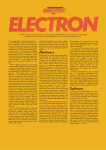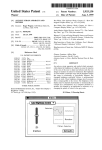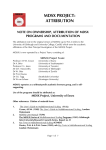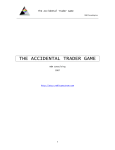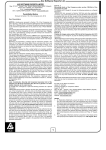Download l /////“5
Transcript
||ll|llllllllllllllllllllllllllllllllllllllllllllllllllllllllllllllllllllll US005528260A United States Patent [19] [11] Patent Number: Kent [45] [54] N METHOD AND APPARATUS FOR PROPORTIONAL AUTO-SCROLLING 5,528,260 Date of Patent: 2277097 11/1990 5-27941 2/1993 Jun. 18, 1996 Japan ................................... .. 345/123 Japan oTHER PUBLICATIONS [75] Inventor: William J. Kent, Mill Valley, Calif. CodewrightTM for Windows (Programmer's Reference [73] Assigne?? Autodesk, Inc-1 San Rafael, Calif- Manual), Premia Corporation, Nov. 1991, (photocopy of cover page and front/back of the publication's title page). [21] Appl. No.: 362,810 CodewrightTM for Windows (User’s Manual), Prernia Cor poratiron, Oct. 1991 (photocopy of cover page and front/back [22] Filed: [2;] Dec- 22’ 1994 of the publication’s title page). (2f ....................................... [ 1 [58] Primary Examiner_k?ery Brier _' ' ' """""" " ’ Field Of Search ................................... .. 345/123-125, Attorney, Agent, or Firm-Merchant, Gould, Smith, Edell, Welter & Schmidt 345/145; 395/138, 157 [57] [56] References Cited _ through data displayed in a window on a monitor attached to 2/1994 Freeman ................................ .. 345/123 FOREIGN PATENT DOCUMENTS l-179193 7/1989 Japan ................................... .. 345/123 2-188790 7/1990 Japan ................................... .. 345/123 47 48 l 42 3 Compute?‘ The Weed. and diriction of the propmiional auto-scrolling funct1on 1s determined by the cursor onenta tion to the window where the data is displayed. 12 Claims, 5 Drawing Sheets 28 47 46 44 /////“5 nation, conceived in liberty, and dedicated to the proposition 44 ' A method and apparatus for proportional auto-scrolhng U.S. PATENT DOCUMENTS 5,289,168 ABSTRACT all men are created equal. Now we are engaged in a great civil war testing whether that nation, or any other nation so conceived and dedicated can I US. Patent Jun. 18, 1996 Sheet 1 of 5 5,528,260 FIG. 1 12 26 20 10 —< 30 US. Patent Jun. 18, 1996 WAIT FOR EVENT 5,528,260 Sheet 3 of 5 50 FIG. 4 MOUSE BUTTON RELEASED OR NO LONGER OUTSIDE WINDOW ? MOUSE BUTTON DEPRESSED IN WINDOW AND DRAGGED OUTSIDE WINDOW ? DISABLE AUTO-SCROLL FUNCTION 58 YES / ACTIVATE PROPORTIONAL AUTO-SCROLL FUNCTION II 55 OTHER MOUSE PROCESSING II PROPORTIONAL AUTO-SCROLL TIMER EVENT ? NO II OTHER MOUSE PROCESSING II YES END THREAD II UPDATE AUTOSCROLL BASED ON MOUSE STATE /68 II sEr TIMER=AT ]/70 64 II < END THREAD >/60 60 US. Patent Jun. 18, 1996 5,528,260 Sheet 4 0f 5 72 FIG. 5 SET TIMER AT 1 SET AUTOSCROLL _ FLAG FIG. 6 SET AUTOSCROLL FLAG INACTIVE \l on DISABLE TIMER FIG. 7A on O CALCULATE AUTOSCROLL DIRECTION CALCULATE AUTOSCROLL AMOUNT on .p SCROLL CALCULATED AMOUNT US. Patent Jun. 18, 1996 HQ, 75 5,528,260 Sheet 5 of 5 READ wmoow BOUNDARIES II DEFINE WINDOW REGIONS II DETERMINE WHICH REGION MOUSE IS‘ LOCATED IN I DETERMINE DIRECTION OF AUTOSCROLL FIG. 7C \ \g DETERMINE MOUSE POSITION II DETERMINE LOCATION OF WINDOW BOUNDARIES II DETERMINE MOUSE POSITION DISTANCE(S) FROM WINDOW BOUNDARIES = ASh, ASv II CALCULATE AUTOSCROLL , AMOUNT =(A$h-v)(AT)(K) (O m 5,528,260 1 2 FIG. 3 is a diagram showing how the auto~scroll speed METHOD AND APPARATUS FOR PROPORTIONAL AUTO-SCROLLING and direction may be determined for one possible embodi ment of the invention; FIG. 4 is a ?ow chart illustrating the logic of the present BACKGROUND OF THE INVENTION invention; FIG. 5 is a ?ow chart illustrating the proportional auto 1. Field of the Invention The present invention relates generally to computer implemented systems for displaying information stored in a scroll activation logic; FIG. 6 is a ?ow chart illustrating the proportional auto ?le in a computer to a user, and in particular, to a method and 10 scroll disable logic; apparatus for proportional auto-scrolling through data dis FIG. 7A is a ?ow chart illustrating the auto-scroll update logic; played in a window wherein the scrolling speed and direc tion is determined by the cursor position on the display. 2. Description of the Related Art FIG. 7B is a flow chart illustrating the auto-scroll direc tion logic; and Presenting information to a user with a computer using multiple windows on a display device with a graphical user interface is well known in the art. Also well known in the art is the technique of using a pointing device, such as a mouse FIG. 7C is a ?ow chart illustrating the auto-scroll speed logic. DETAILED DESCRIPTION OF THE PREFERRED EMBODIMENT or a trackball to select data within the ?le before a function is applied to the data. Further, the method of using the pointing device to provide graphical input to the window is In the following description of the preferred embodiment, also well known. However, these techniques present some unique prob lems. Typically, the information contained in the ?le is greater than what can be displayed in the window at one 25 time. Similarly, the user may want to provide graphical input which exceeds the window size. Hence, some method must be employed to allow the user to use the pointing device to select or input information which exceeds the window boundaries. One possible method to solve this problem is to merely enlarge the window. However, this is useful only when the amount of data is less than the window size. Another method to solve this problem is to use auto-scroll functions, which are well known in the art. Using auto-scroll 35 methods, the data displayed in the window is automatically scrolled without using the scroll bars when the pointing device is “dragged” outside the window. These prior art auto-scroll methods, however, are inher~ ently limited and do not fully utilize the capabilities of the graphical user interface. For example, the prior art auto scrolling methods do not allow the user to control the speed of the auto-scroll. The net result is that the speed of the auto-scroll is often too fast or too slow. The speed of the auto-scroll may be too slow in situations where the user desires to scroll only a small part of the ?le that is not reference is made to the accompanying drawings which form a part hereof, and in which is shown by way of illustration a speci?c embodiment in which the invention may be practiced. It is understood that other embodiments may be utilized and structural changes may be made without departing from the scope of the present invention. FIG. 1 shows one possible embodiment of the present invention. The present invention comprises a method and apparatus for proportional auto-scrolling through data dis played on a computer 10. The computer 10 preferably includes a display device 12, keyboard 14, mouse pointing device 16 and disk storage 18. The mouse pointing device 16 is connected to the computer 10 by a connecting cable 20. Also a printer 22 may be attached to the computer 10 by a cable 24. Those skilled in the art will recognize that other pointing and selecting devices may be used in place of one 45 mouse pointing device 16. For example, a trackball or pressure sensor device may be used. Also, pointing and selecting of data on the display device 12 may be accom plished by devices which use physical contact with the display device 12. Those skilled in the art will also recognize that the display device 12 can be any device capable of presenting information to the user, including cathode ray tube monitors and liquid crystal displays. Of course, the elements described in FIG. 1 may also be integrated into a single package, such as a laptop or notebook computer. displayed in the window. Conversely, the speed of the In the preferred embodiment, an application program (not shown) executing under the control of an operating system auto-scroll may be too fast in situations where the user desires to select a large amount of text. Analogous problems exist when the user desires to input graphical user inputs larger than the window size. This situation may occur when 26 displays one or more windows 28 on the display device 12 to the user. The proportional auto-scroll function 30 of the present invention is implemented by the computer 10 and is using paint, draw, or CAD (computer automated design) typically embodied either within the application program or programs. the operating system 26 as a function associated with the Therefore, there exists a need for an intuitive proportional 55 display of data in the windows 28. auto-scroll capability for information presented in a window. BRIEF DESCRIPTION OF THE DRAWINGS Referring now to the drawings in which like reference 60 cally scrolled in an operator-selected direction and at an numbers represent corresponding parts throughout: operator~selected speed. FIG. 1 illustrates one possible embodiment of the present In the preferred embodiment, the proportional auto-scroll invention; FIG. 2 is a diagram showing the relationships between the cursor and the window in one possible embodiment of the invention; The proportional auto-scroll function 30 of the present invention isused when only a portion of the available data is displayed in the window 28. In response to an operator command, the data displayed in the window 28 is automati function 30 is enabled by an operator based on a cursor’s 65 position relative to the window 28. In particular, the pro portional auto-scroll function 30 is enabled when the cursor is either placed or dragged outside the active window 28. 5,528,260 3 4 Of. course, those skilled in the art will note that the proportional auto-scroll function 30 may be enabled in several other ways. In one alternative embodiment, the lines formed by extending the borders of the window to the display screen 34 periphery. When the cursor is dragged to the position 40 outside the window 28, the vertical and horizontal distance, As, and As", from the horizontal 45 and vertical 47 lines indicate the desired speed of auto-scroll function 30 in each direction. Of course, those skilled in the art will note that the speed of the auto-scroll function may also be determined in other ways, e.g., the speed may depend auto-scroll function 30 could be enabled by dragging the cursor position from within the window 28 to outside the window 28. In another alternative embodiment, the auto scroll function could be enabled by merely placing the cursor position outside the window 28. on the radial distance of the cursor 44 from the center of the In a preferred embodiment, the direction and speed indi cation for the proportional auto-scroll function 30 comprises window 28. In the preferred embodiment, the direction of the propor a cursor position on the display device 12. Preferably, the direction of the auto-scroll function 30‘is determined by the cursor’s orientation to the window 28, and‘the speed of the auto-scroll function 30 is related to the cursor’s distance from the window 28. Of course, those skilled in the art will recognize that the speed and direction of the auto-scroll function 30 may be selected in other ways. For example, in one alternative embodiment, the speed of the auto-scroll function 30 may be determined by the period of time that the cursor is located outside the window 28. In another alternative embodiment, tional auto-scroll function 30 is determined by dividing‘the 15 area surrounding the window 28 into eight auto-scroll cursor regions 44. Each auto-scroll cursor region 44 is adjacent to the window 28 and either directly horizontally opposed to the window 28, directly vertically opposed to the window 28 or both horizontally and vertically opposed to the window 28. These regions 44 are used to de?ne the direction of the auto-scroll function 30. For example, if one of the buttons 32 on the pointing device 16 is depressed with the cursor 38 , 20 positioned within the window 28, and thereafter the pointing device 16 is dragged with the button 32 held down to a the speed of the auto~scroll function 30 may be selected by ~ depressing buttons on the pointing device 4 or keyboard 14, singly, in different combinations, or multiple times. cursor position 40 outside the window 28, then the direction‘ of the proportional auto-scroll function 30 de?ned by this motion would be determined from the region in which the ‘ ‘ The auto-scroll function 30 of the present invention 25 cursor 40 is located. In the example shown'in FIG. 3, the ‘ direction of the auto-scroll function 30 would be down and provides several advantages over prior art auto-scroll meth to the right. Of course, those skilled in the art will note that ods. First, it allows the user to select the scroll speed. The the auto-scroll cursor regions 44 may also be de?ned in other ‘ present invention also allows large ?les to be scrolled more, ways, e.g., the regions 44 may be de?ned as extending quickly, while at the same time allowing smaller ?les to be 30 radially away from the center of the window 28 toward the scrolled more slowly without requiring the user to master the edges of the display screen 34. ' use of any additional buttons or functions. In addition, the Those skilled in the art will note that both the speed and scroll speed is selected in an intuitively satisfying way, direction of the proportional auto-scroll function 30 may which is consistent with a graphical user interface (GUI) also/be determined by separating the region outside the concept. Further, the auto-scroll function 30 is implemented without requiring‘any changes: in the user interface. With the present invention, the user can easily select both the speed and direction of auto-scroll merely by the position of a cursor relative to the window 28 displayed on the display device 12. FIG. 2 is. a diagram showing a display screen 34 presented 40 window 28 into greater numbers of regions 44 and deter~ mining both the speed and direction of the auto-scroll function 30 from the region in which the cursor 40 located outside of the window 28 is positioned. In another alterna tive embodiment, those skilled in the art will note thatboth the speed and direction of auto-scroll function 30 may be determined directly from a vector from the boundaries of the window 28 to the cursor position 40 outside the window 28, to the user of the computer 10 on the display device 12. The operating system 26 displays data in a window 28 on the or from a vector from the center of one window 28 to the display screen 34. By manipulating the pointing device 16, cursor position 40. This embodiment would have the addi the location of a cursor 38 can be varied to locations tional advantage of de?ning the speed of the auto-scroll throughout the display screen 34. As described above, the proportional auto-scroll function 30 may be enabled by locating the cursor 38 inside the window 28, depressing one or more buttons 32 on the pointing device 16, and moving function proportional to the window size. The auto-scroll function 30 may also allow the userv to . input graphical data exceeding the window boundary 48. In this embodiment, the auto-scroll function 30 presents the cursor 38 to a location outside the window 28, e~.g., the 50 graphical user inputs on the display device 12. Typically, the position indicated by 40. graphical user inputs are described by positioning the cursor 38 within the window 28, depressing and holding down the FIG. 3 is a diagram showing information presented to the user of the computer 10 on the display device 12. This diagram illustrates one possible implementation for deter mining the speed and direction of the auto-scroll function 30 from the cursor position. In this example, data 42 is dis played within the window 28, wherein the window boundary 48 is indicated with a heavy line. Generally, the amount of the data would be larger than the size of the window 28 when the auto-scroll function is used. Hence, data 42 that is contained within the window 28 yet invisible to the user is 55 dragged to locations 40 outside the window 28, the graphical user input exceeds the window boundary 48, and the auto scroll function 30 is enabled. Those skilled in the art will 60 position 38 located inside the window 28 and a cursor the distance of the cursor from horizontal 45 and vertical 47 recognize that in this embodiment, the speed and direction of'the auto-scroll function 30 may be controlled as described shown as hidden text 46. Also shown in FIG. 3 is a cursor position 40 located outside the window. In the preferred embodiment, the speed of the propor tional auto-scroll function 30 is calculated by determining mouse button 32 while the cursor 38 is dragged to other locations within the window 28. When the graphical user input does not exceed the window boundary 48, the auto scroll function 30 is not enabled. When the cursor 38 is 65 herein. Also, those skilled in the art will recognize that graphical user inputs may be used to enable the auto-scroll function in other ways. For example, the graphical user input can be de?ned by the selection of de?ned objects whose size and location require the auto-scroll function 30 to be enabled to present the object in the window 28. ‘ 5,528,260 5 FIG. 4 is a ?ow chart illustrating one embodiment of the logic for implementing the proportional auto-scroll function 30 of the present invention. Block 50 waits for an event to occur, indicating mouse input from the user. Block 52 checks to determine if the mouse event indicates that the auto-scroll function 30 should be enabled. For example, in the preferred embodiment, block 52 will be set to a logical true when a button 32 in the pointing device 16 is depressed when the cursor 38 is located within the window 28, and thereafter dragged to a position 40 outside the window 28. 6 calculated in block 90. For example, if the cursor 38 is located outside the window 28 as shown in FIG. 3, then the direction of the auto-scroll function 30 is determined to be down and to the right. FIG. 7C is a ?ow chart illustrating the logic employed in calculating the auto-scroll amount or speed. Block 80 deter mines the position of the cursor 38. The position of the cursor 38 is determined in block 94. Block 96, determines the location of the window 28 boundaries. This step is ordinarily analogous to that performed in block 86. Block 98 In an alternative embodiment, block 52 will be enabled determines the distance from the mouse position to each when the cursor 38 is moved to a position 40 outside of the window boundary. Block 100 uses these distances, denoted window. As,, for the horizontal distance and As, for the vertical If block 52 indicates that a mouse event has occurred, distance, to calculate the auto-scroll amount. In one embodi block 54 determines whether the auto-scroll function 30 is ment, auto-scroll amount in the horizontal direction is ca1~ 15 activated. If block 52 indicates that mouse event has not culated as a product of the distance from the window occurred, block 66 checks to determine if a timer event has boundary in the horizontal direction, As,,, the value of the occurred. timer AT and a constant K selected either by the user or by the program to control the auto-scroll scaled speed. For Block 54 determines whether the auto~scroll function 30 example, if either the user or the application program is activated. If block 54 indicates that the auto-scroll func containing the auto-scroll function 30 desires greater sensi tion 30 is not activated, block 56 checks to determine if a tivity, the value of K would be proportionally increased so mouse button 32 was depressed within the window 28 and dragged outside of the window 28. If the result of block 56 is a logical false, the logic reverts to block 64, returning to other mouse processing. If the result of block 56 is a logical true, block 58 activates the proportional auto-scroll function as described in FIG. 5, and ordinary processing is resumed in block 60. If block 54 indicates that the auto-scroll function 30 is that the auto-scroll amount would be larger for given values of As,, or As, and AT. The auto-scroll speed in the vertical direction is calculated the same way, but using the distance from the window boundary in the vertical direction, As,,. event loops. the ?le’s contents in a window on a monitor attached to the In an alternative embodiment, the speed of the auto-scroll function 30 is determined by the vector distance from the center of the window 28 to the cursor position outside of the activated, block 62 checks to determine if a mouse button 32 30 window 40. Further, in another alternative embodiment, block 88 de?nes auto-scroll cursor regions 44 radially from was released or is no longer outside the window 28. If the the window 28, and these regions are used to de?ne the result of block 62 is true, block 63 disables the auto-scroll direction of auto-scroll in block 92. Finally, in yet another function 30 as described in FIG. 6, and thereafter, the logic alternative embodiment, block 88 de?nes a number of reverts to block 64, returning to other mouse processing. If the result of block 62 is a logical false, block 66 checks to 35 auto-scroll cursor regions 44 su?icient to de?ne both the speed and direction of the auto-scroll function 30, and the determine if a timer event has occurred. speed and direction of auto-scroll are determined from the If a timer event has occurred as determined by block 66, location of the cursor 38. For example, if twenty-four auto-scroll is updated based upon the mouse state 68 as auto»scroll cursor regions 44 are de?ned, both the speed and described in FIG. 7A. Thereafter the timer is reset to a value direction of the proportional auto-scroll function 30 are be of AT as shown in block 70. If a timer event has not occurred determined from the location of the cursor 38. as determined by block 68, other mouse processing 64 is This concludes the description of the preferred embodi selected. ment of the invention. In summary, the present invention Other embodiments of the auto-scroll speed and direction discloses a system by which information contained in the logic are possible. For example, the speed of the auto-scroll function 30 may be set by varying the timer value, AT, 45 ?les stored in the computer are automatically and propor tionately scrolled in a direction and speed selected by the instead of As‘, and As,,. Also, the auto-scroll function 30 may user. This is accomplished by displaying at least a portion of be implemented using simple polling techniques instead of computer, accepting operator input to enable proportional FIG. 5 is a flow chart illustrating the proportional auto auto-scroll function, and performing the proportional auto scroll activation logic. Block 72 sets the auto-scroll timer to SO scroll function according to the operator input. Systems and a value of AT, and block 74 sets the auto-scroll ?ag. methods have been described by which the operator input FIG. 6 is a flow chart illustrating the proportional auto comprises a direction and speed indication, and the direction scroll disable logic. Block 76 sets an auto-scroll ?ag to and speed of the auto-scroll is accordingly selected. Further, inactive status. Block 78 disables the auto-scroll timer. 55 the present invention discloses a system and method wherein a cursor positioned on the monitor determines the direction FIG. 7A is a flow chart illustrating the auto-scroll update logic. Block 80 calculates the auto-scroll function 30 direc and speed of the auto-scroll, and in one embodiment, the cursor’s distance from the window is used to determine the tion. Block 82 calculates the auto-scroll amount as described in FIG. 7C. Block 84 scrolls the calculated amount. speed of auto-scroll. The foregoing description of the preferred embodiment of FIG. 7B is a flow chart illustrating the auto-scroll direc 60 the invention has been presented for purposes of illustration tion logic. Block 86 reads the window boundaries. Block 88 and description. It is not intended to be exhaustive or to lirrrit de?nes window regions 88. Block 90 determines which the invention to the precise form disclosed. Many modi?~ region the cursor is located in, and block 92 determines the cations and variations are possible in light of the above direction of the auto-scroll function 30. The window region de?ned in block 88 ordinarily correspond to the auto-scroll 65 teaching. It is intended that the scope of the invention be limited not by this detailed description, but rather by the cursor regions 44. Further, the direction of auto-scroll 92 is claims appended hereto. determined from which region the mouse is located in as 5,528,260 7 What is claimed is: 8 tion is located, and the auto-scroll speed being deter . 1. A method of proportionally auto-scrolling through mined by a distance from the selected cursor position to the nearest one of the vertical lines and a distance from the selected cursor position to a nearest one of the information on a display attached to a computer, comprising the steps of: (a) presenting at least a portion of the information in a window on the display, the window de?ned by borders dividing the display into a window region and a sur rounding display region; (b) logically subdividing the surrounding display region into a plurality of auto-scroll cursor regions de?ned by horizontal and vertical lines formed by extending the horizontal lines; and according to the computed auto-scroll direction and speed, wherein the proportional auto-scrolling function comprises successively presenting portions of the l0 borders from the window to an outer periphery of the display; proportional auto~scrolling function, the operator input , 7. The method of claim 5, wherein the auto-scroll. direc 15 comprising a selected cursor position in one of the auto-scroll cursor regions; (d) computing a proportional auto-scroll direction and said in the computer using the operator input, the information on the display according to the computed auto-scroll direction and speed. 6. The method of claim 5, wherein the auto-scroll speed is computed in rectangular coordinates. _ (c) accepting operator input into the computer to enable a , (e) performing the proportional auto-scrolling function tion is computed in rectangular coordinates. 8. The. method of claim 1, wherein the operator input comprises the steps of locating the cursor inside the window, depressing at least one button on a pointing device control ling the cursor, and moving the cursor from the window 20 region to an auto-scroll cursor region. 9. A device for proportionally auto-scrolling through auto-scroll direction being determined from the auto scroll cursor region in which the selected cursor posi information on a display attached to a computer, comprising: tion is located, and the auto-scroll speed being deter~ (a) means, performed by the computer, for presenting at mined by a distance from the selected cursor position to least a portion of the information in a window on the ‘ ' the nearest one of the vertical lines and a distance'from 25 the selected cursor position to a nearest one of the horizontal lines; and region; (e) performing the proportional auto-scrolling function (b) means, performed by the computer, for logically according to the computed auto-scroll direction and subdividing the surrounding display region into‘a plu speed, wherein the proportional auto-scroll'mg function comprises successively presenting portions of the rality of auto-scroll cursor regions de?ned by horizon-' tal and vertical lines formed by extending the borders from the window to an outer periphery of thedisplay; information on the display according to the computed auto-scroll direction and speed. (c) means, performed by the computer, for accepting 2. The method of claim 1, wherein the auto-scroll. speed is computed in rectangular coordinates. 35 3. The method of claim 1, wherein the auto-scroll direc tion is computed in rectangular coordinates. 4. The method of claim 1, wherein the operator input comprises the steps of locating the cursor inside the window, (d) means, performed by the computer, for computing a 5. A program storage device readable by a computer and auto-scrolling information on a display attached to a com (a) presenting at least a portion of the information in a window on the display, the window de?ned by borders dividing the display into a window region and a sur 50 rounding display region; I into a plurality of auto-scroll cursor regions de?ned by horizontal and vertical lines formed by extending the borders from the window to an outer periphery of the display; (c) accepting operator input into the computer to enable a proportional auto-scrolling function, the operator input proportional auto-scroll direction and speed from the operator input, the auto-scroll direction being deter mined from the auto-scroll cursor region in which the selected cursor position is located, and the auto-scroll speed being determined by a distance from the selected 45 puter, the method steps comprising the steps of: (b) logically subdividing the surrounding display region operator input into the computer to enable a propor tional auto-scrolling function, the operator input com prising a selected cursor position in one of the auto scroll cursor regions; depressing at least one button on a pointing device control 40 ling the cursor, and moving the cursor from the window region to an auto-scroll cursor region. tangibly embodying a program of instructions executable by the computer to perform method stepsfor proportionally display, the window de?ned by borders dividing the display into a window region and a surrounding display cursor position to the nearest one of the vertical lines and a distance from the selected cursor position to a nearest one of the horizontal lines; and (e) means, performed by the computer, for performing the proportional auto~scrolling function according to the computed auto-scroll direction and speed, wherein the proportional auto-scrolling function comprises succes sively presenting portions of the information on the display according to the computed auto-scroll direction and speed. 10. The device of claim 9, wherein the auto-scroll speed i is computed in rectangular coordinates. 11. The device of claim 9, wherein the auto-scroll direc tion is computed in rectangular coordinates. 12. The device of claim 9, wherein the operator input comprises locating the cursor inside the window, depressing comprising a selected cursor position in one of the 60 auto-scroll cursor regions; at least one button on a pointing device controlling the (d) computing a proportional auto-scroll direction and cursor, and moving the cursor position from the window speed in the computer using the operator input, the auto‘scroll direction being determined from the auto scroll cursor region in which the selected cursor posi region to an auto-scroll cursor region. ‘ UNITED STATES PATENT AND TRADEMARK OFFICE CERTIFICATE OF CORRECTION V PATENT N0. : 5,528,260 DATED : June 18, 1996 INVENTORlSl : William J. Kent It is certi?ed that error appears in the above-identified patent and that said letters Patent is hereby corrected as shown below: Column 7, line 19. before "in". "said" should read —speed-. Signed and Sealed this Nineteenth Day of November, 1996 BRUCE LEHMAN Arresting Officer Cammissioner of Parents and Trademark:











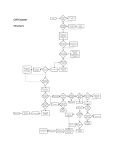


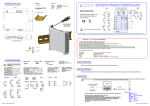
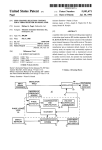
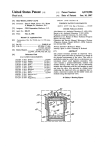
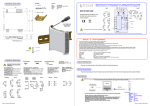
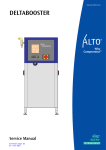
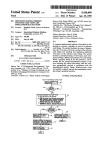
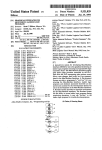

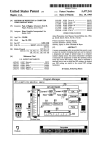
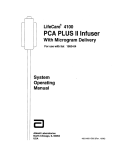
![[54] W, rm-pg`vzvlsggéggllslswnolq MONITOR OTHER](http://vs1.manualzilla.com/store/data/005697201_1-5cf72edac23b396dc325f3c508f97781-150x150.png)
